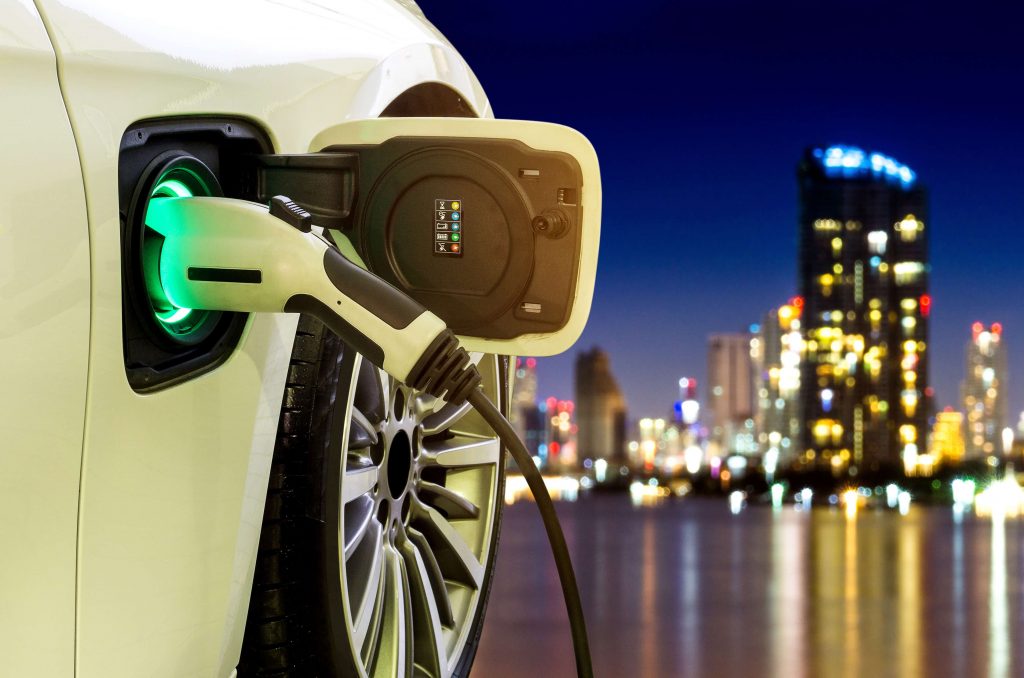
For the past 37 years, a Purdue University mechanical engineering professor has been solving heat-related emergencies. They tend to behave in predictable ways. Anyone who wants to build a supercomputer or a new fighter jet avionics system will eventually run into the same issue. Massive amounts of heat are produced by high-end electronic devices, which contain trillions of transistors. He studies thermal management full-time, so the dreamers come to him instead. A common sentiment expressed by him is that “cooling always appears to be the last thing people think about”.
Mudawar was approached by Ford a few years ago with a more mundane issue: a charging cord. Ford is in a competition with other automakers to produce electric vehicles that charge quickly. While this may be beneficial, it has a drawback in terms of heat: transporting electrons faster. Temperature-related issues can occur both inside and outside the battery if you’re trying to charge your electric vehicle in five minutes or less. When the cord gets too hot, it acts as a bottleneck and increases the temperature.
Larger electric vehicles have recently been a popular trend in recent years. To combat “range anxiety,” automakers are now aiming for a driving range of 400 miles or more while also electrifying American roadside mainstays like Chevrolet Silverados, Ford F-150s, and Hummers. Massive cars and massive range demands necessitate massive batteries. As expected, there is a downside to this: It takes longer to recharge the large batteries. State-of-the-art highway chargers, which account for only 5% of EV fill-ups, maybe the fastest way to acquire a full charge in 30 or 40 minutes. If you’re able to plug in your car at home and let the big battery charge up overnight, then these cars are ideal for you!
Ahmad Pesaran, an energy storage expert at the National Renewable Energy Laboratory, says it’s impossible to combine the two. There is no comparison between the 40-kwh battery in the Nissan Leaf and the 200-kwh battery in a Hummer when it comes to the meaning of the phrase “five-minute charge.” These massive batteries require a lot more power, and because of their design, it’s difficult to charge them quickly. New chargers and battery solutions, snazzy new cables, and perhaps even changes to the transmission lines that power the chargers are all potential requirements for dealing with such a large increase in demand for chargers. To him, it’s hard to see how we can expect an electric car that can go 500 miles on a single charge to be fast enough to recharge in only five minutes. Which direction do you prefer? Is there a limit on how many times you can do this? There is also the possibility that this is inevitable.
According to Chao-Yang Wang, a Penn State University battery expert, the majority of vehicles on the road today can’t take advantage of the most powerful charging stations we currently have. In particular, a phenomenon known as lithium plating is one of the primary contributing factors. An anode constructed of graphite traps lithium ions as they charge. This material has been developed to be somewhat thick in order to contain more ions in batteries in order to pack more energy. But this becomes a hurdle for charging. As the current increases, the thick anode material becomes increasingly difficult to penetrate by the ions. As a result, they form lithium plates on its surface. And there’s no going back once it happens. Because of this, the battery eventually loses the ability to fully charge.
There are a number of labs and start-ups working on possible solutions to this problem, such as shifting the anode from graphite to silicon or lithium metal. Adding heat to the equation is Wang’s solution to the concern, which was published in Nature Energy last year. It takes only 60 seconds for the battery to heat up to 60 degrees Celsius, at which point lithium ions may more easily find their way to the anode thanks to a tiny strip of nickel foil inside. In order to avoid plating, you should increase the amount of current that goes into the battery. This will help the battery charge faster and save you time.
Wang sees charging a battery with a capacity of 40 to 50 kW in ten minutes. This is what the DOE calls “extreme charging” for an efficient car—enough juice to enable a highway range of 200 miles. But only about half the energy stored in Tesla’s most expensive model or a quarter of the battery power of the future Chevy pickup. And to Eric Rountree, head of business development at EC Power, a startup commercialising Wang’s technology, that’s not a bad thing. Because the current electric vehicle environment is moving in the opposite direction to what it should be, he argues, “we have one of the difficulties we face.” We would like to see more renewable energy put to use. Automobiles with smaller carbon footprints and less reliance on natural resources in their batteries are possible.
Shorter-range vehicles are already common all over the world, even if they don’t have fast charging. He cites China as an example, where microEVs with smaller batteries are consistently bestsellers, and manufacturers like Tesla have made progress investing in iron phosphate batteries, which pack less energy but use fewer precious minerals like cobalt and nickel than the most range-optimized designs.
Lower-range vehicles may potentially have a market in the US, especially with fast-charging in the mix. Apartment dwellers, according to Pesaran of NREL, don’t have chargers in their homes. If there was a station that could recharge a phone in five or ten minutes, they’d be all over it! You take your electric vehicle to a convenient location, such as a converted gas station near your home or work, and fill it up with electricity.
A professor of energy systems at MIT believes that range will continue to be an important consideration for EV consumers. It will take time to implement any form of fast-charging technology. Installing them in the right location is critical. There is a financial barrier to installing the currently available fast chargers in every location, she explains. She argues that investment in street-side chargers for apartment dwellers, for example, should not be slashed to pay for quicker charging. Increasing the number of people who can drive electric vehicles is a win-win situation for consumers and the grid.
Pesaran suspects that automakers will keep pushing for more extreme charging speeds—greater range in less time—given the way electric car range and charging capabilities are being advertised to woo wary purchasers. There may be an advantage to using the heat-tolerant charging cable provided by Mudawar in these circumstances. “Two-stage cooling” is how he approached the problem of overheating in his laboratory. Liquid is typically pumped through an insulating layer that absorbs heat from the charging wire to power the typical electric vehicle system. Except for the small amount of boiling at the point where the coolant meets the cable, his concept is very identical to ours. Rather than releasing steam, these microscopic bubbles are permitted to re-condense. This causes the cable to cool down very quickly, allowing it to take five times the current of a Tesla Supercharger.
As a result, it’s still a prototype that’s only been tested in a lab environment and published in a journal last year. On the other hand, Mudawar has not yet tested the cable’s ability to carry a large amount of electricity on a car’s battery. The heat imbalance caused by such a large charging capacity can be a problem. Fast-charging a large automobile battery produces a lot of heat in a short period of time. Nonetheless, the motor will run for hours or even days at a time, creating significantly less heat in the process. Does it make sense to spend money on new cooling systems for a few minutes of charging? Already, the packaging, electronics, and cooling equipment make up the majority of the weight of a battery pack rather than the battery cells themselves.
There are other possible solutions, Mudawar points out. Some people are studying the possibility of infusing coolant into the vehicle while charging, freezing the battery pack while it charges without adding weight to the automobile. A new approach to automotive design is needed to achieve this, though. It’ll be necessary to rethink everything from batteries to cables and connectors to transmission lines. According to Mudawar, who just announced the opening of a new thermal management centre for fast charging at Purdue, everything must be able to withstand the heat. He argues that today’s technologies will not be able to deal with those new requirements. To put it another way, don’t leave the cooling issue to the end.




